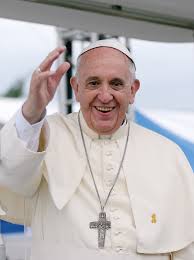In America, families typically celebrate the holiday of Thanksgiving as a day intended for us all to count our blessings, spend time with loved ones, and eat large feasts. However, a more complex history lies beneath the surface of this holiday of gratitude. The traditional Thanksgiving background story provides a narrative about joyful associations between the Pilgrims and Indigenous people. Although this is a pleasant idea to imagine, it is simply a false narrative. Without context, the suffering the Native Americans endured at the cost of colonization is immediately undermined and the reality of American history is lost. Unfortunately, American society is typically either unaware of this context or just chooses to be ignorant of facts.
The first Thanksgiving took place back in 1621 after the Pilgrims sailed across the Atlantic Oceans and wanted to celebrate their first successful harvest in America. According to the traditional Thanksgiving narrative, both the Pilgrims and Wampanoag Native Americans supposedly shared a three-day-long feast together. The Wampanoag people previously assisted the new settlers by helping them learn to survive in the wilderness; they taught the Pilgrims how to obtain food during their first harsh winter experiences and introduced them to new agricultural methods, which helped crop growth.
Despite this, many “facts” taught in classrooms do not relay this true story of Thanksgiving. Textbooks do not emphasize this tense and inauthentic relationship between both groups. For instance, Massasoit – the Wampanoag leader – had no choice but to form an alliance with the settlers, as his people were struggling due to the effects of an epidemic that was assumed to be caused by traders from Europe – prior to the Pilgrims’ arrival. According to Detroit PBS Television, this wasn’t just an act of civility; it was unfortunately an act of necessity, as “the Wampanoag sachem calculated that a tactical alliance with the foreigners would provide a way to protect his people and hold his Native enemies at bay. He agreed to give the English the help they needed” since this epidemic wiped out around 90% of the Native American populations in specific tribal regions.
As years went on, the intensity of this relationship between the settlers and the Indigenous people continued to rise with the expansion of European territories into their lands and taking advantage of their resources. With this, the period associated with the “First Thanksgiving” began to be marked by its rising levels of violence. Take, for example, King Philip’s War in 1675, which was named after Massasoit’s son Metacom — known as “King Philip” by the English. King Philip’s War conflict is significantly remembered among the most gruesome brawls in U.S. history. As stated by Mayflower 400 News, it is “still considered by many to be the deadliest war in American history, leading to the deaths of thousands of people” for both the Native Americans and the colonists.” Entire Native villages were destroyed, and survivors were often sold into slavery or displaced from their homelands. As a result of the war, the Wampanoag as well as other tribes began to cave in, allowing this expansion of settlements due to the violence being faced. Unfortunately, the “survivors” were not all that lucky either, as they typically got taken from their homes and sent into slavery; the indigenous villages were demolished at the hands of the colonists.
As the following centuries passed, this underlying darkness of the history of Thanksgiving began to grow even more. Take, for instance, how following the 1637 Pequot Massacre—where hundreds of Pequot people were killed by colonists —Puritan leaders proclaimed a “Day of Thanksgiving” was proper to celebrate this occasion.
However, Thanksgiving was not established as a relevant, nationwide holiday until the mid-1860s – thanks to President Abraham Lincoln. In 1863, during a difficult period in the Cold War, Lincoln declared it a “national day of gratitude” to unite the country. It was within this time period, that the public perception of Thanksgiving really started to shift from its colonial roots; instead, U.S. citizens simply viewed it as another holiday, specifically intending for Americans to appreciate their blessings and fortunes.
Despite this new understanding of the holiday that was quickly established as a key aspect of American identity. Although the “First Thanksgiving” is certainly a more pleasant thought, it also served as a means to excuse European westward expansion.
On the other hand, in modern times, Native Americans and their allies have taken an entirely different approach. As for the majority of this group, they intend to oppose the false narrative of Thanksgiving, emphasizing its harmful effect on today’s Indigenous perspectives. Whether living in tribal or modern communities, for many indigenous people, Thanksgiving is not considered a celebration. Instead, it is seen as a day to remember as well as to mourn their lost culture, lives, and land.
Fortunately for Americans, the simple knowledge of Thanksgiving’s underlying dark history does not mean they should just ditch their typical, loved holiday traditions. Rather than abandoning celebrating altogether out of respect and morality, one can take it as an opportunity to educate oneself and others. With this, new meanings can be associated in a way that respects the Indigenous origins all whilst allowing Americans to enjoy their beloved “day of gratitude.”






